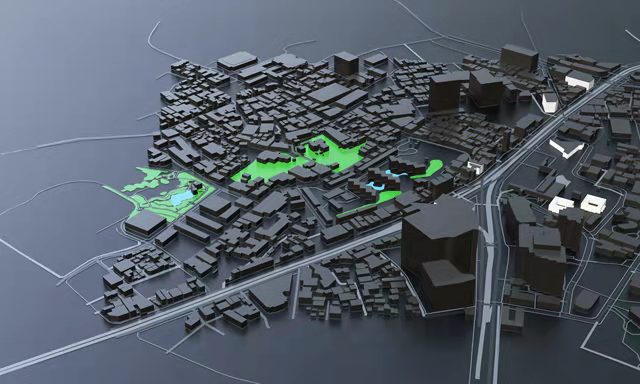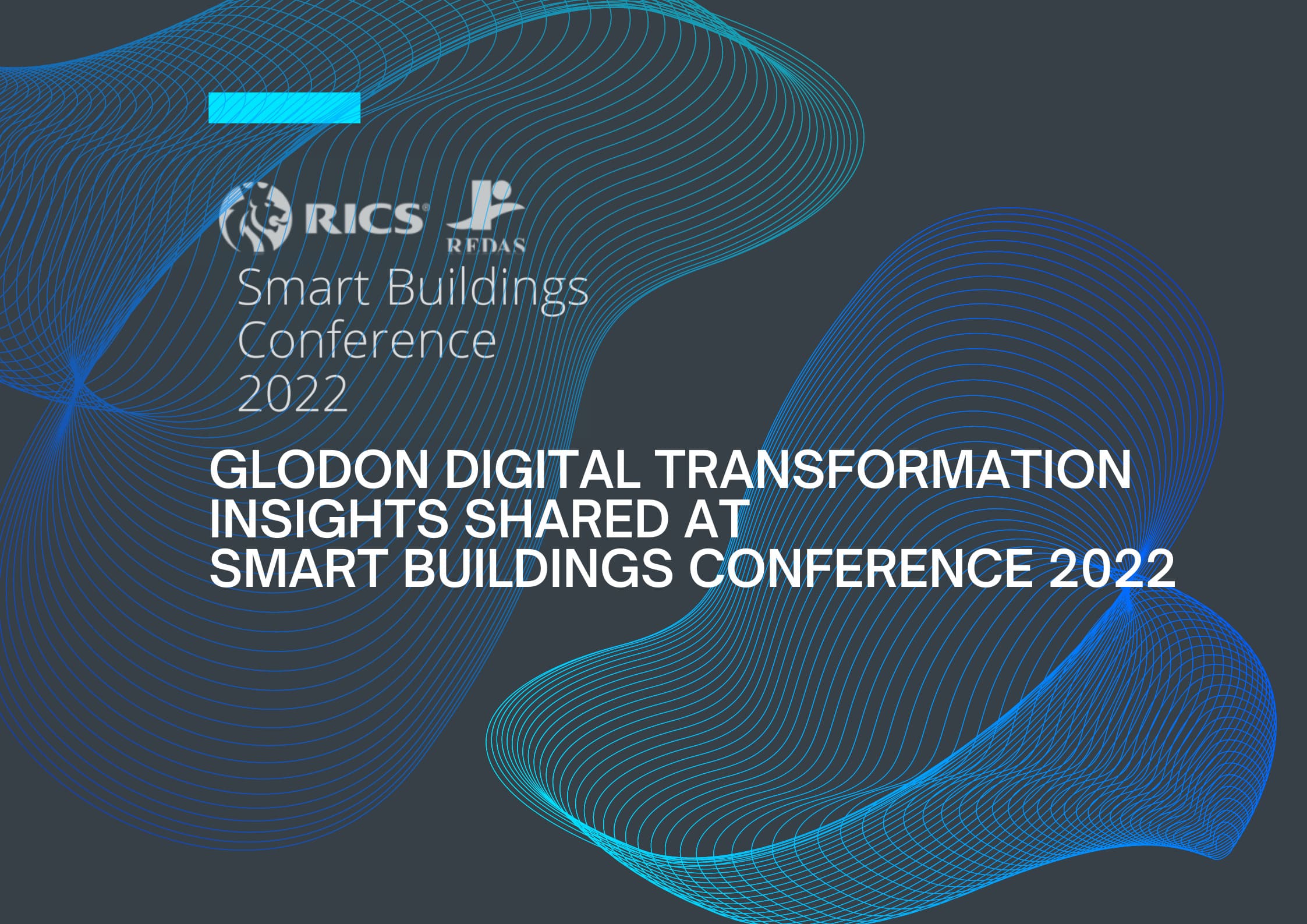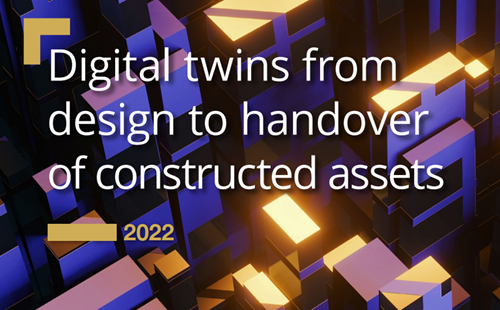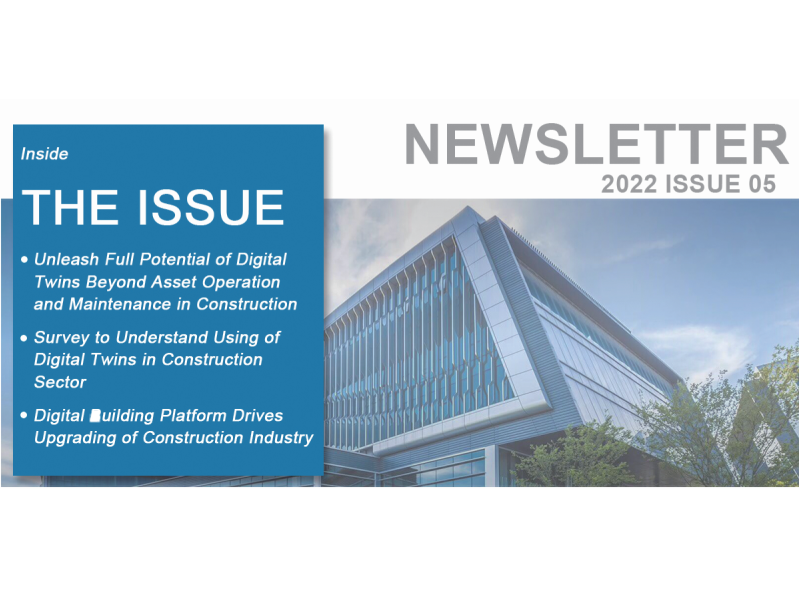Sep 01.2019
With Digital Transformation of Construction Companies, We are on the Road Together
The concept of Digital Building was officially proposed by Glodon at the China Digital Building Summit 2017. In January 2018, Glodon took the lead in releasing the Digital Building White Paper. In these two years, based on the concept, we have done a lot of in-depth practice, working with many partners and customers to improve our products and enhance the quality of our projects. Today, I would like to share our digital building practices and insights with you.
In the information society, the core of a thing, whether it is a large server, or a most common desktop or laptop, is the chip. What is chip processing? It is actually very simple that the chip is just processing two numbers: 0 and 1. The chip processing and network transmission are handled by 0 and 1, which can accurately express any number and text. However, what is the concrete value of such numbers for society? Let's take the UK as an example.
The UK has been at the forefront of digital transformation, and there are four key impacts of sharing data according to UK government statistics from 2015, namely lower consumer spending, reduced environmental impact, improved transport, and smart city building. For example, every £1 invested in smart water meters brings £2.7 in savings; the entire UK construction industry adopted BIM technology in 2014, ultimately saving £8.4 billion; the digitization of asset information on the rail network could bring £770 million in savings over the next eight years, etc.
The construction industry advocates greening whose goal is supported by industrialization and digitalization. In terms of industrialization, manufacturing is the best benchmark. Both the manufacturing and construction industries are heavily using mechanical equipment for higher efficiency. Through machinery, the per capita value was raised by 35% in manufacturing, and 19% in construction from 2000 to 2016. Admittedly, there is a strong contrast between the two, with the construction industry lagging far behind the manufacturing industry in terms of mechanization.
In the same period, the value growth through digitalization was 55% in manufacturing, and 107% in construction. But the digitalization level of the construction industry was much lower than that of the manufacturing industry in general. In recent years, the widely-recognized data from a consulting firm show that the construction industry ranks the first or second to last among all as to digitalization. However, this also suggests much faster growth of the construction industry once digital transformation is enhanced.
Now, here's a question for us: Is it necessary to digitize construction projects? Some people think that we are so familiar with engineering that we do not need digitalization to be applied unless there is a special project. However there are new technologies and paradigms such as BIM that are already and are widely used worldwide In fact, there are new technologies and concepts in the construction industry all the time; the problem lies in the practitioners' views and perspectives ongoing through change. Since digitalization seems new to this industry, we may be reluctant to take the risk and prefer to wait until there is any pioneer, which might be the attitude adopted by many enterprises. However, can we really postpone such an attempt?
Let's see how developers of the construction industry are doing in this regard. We started to cooperate with Wanda Group in 2014 in terms of BIM ecology for the development, operation, and maintenance of their assets, and then worked with a series of large real estates companies such as Longfor, Greentown, and Country Garden as to deep application practice. When it comes to the value that these practices bring, Wanda tries to make up for the insufficiency in development quantity and quality as the enterprise grows rapidly. With 15 Wanda Plazas delivered in 2010 and 66 in 2017, it is difficult to standardize and effectively manage financial support, administration efficiency, and human resources without a supporting platform. Meanwhile, some standards can be subdivided for the development based on such practices Wanda's existing IT systems of design, cost, construction, operation, and maintenance, combining BIM technology for the digital upgrade, can produce greater benefits and help realize delicacy management of industrialization, to meet the requirements of the enterprise's asset-light management strategy. At the same time, Country Garden is also developing a collaborative design platform of lightweight 3D visualization that integrates various models for quick browsing and analysis. Currently, Developers and developers are advancing rapidly, which necessitates constructors' active participation; the digitalization speed of the whole industrial chain will be far beyond our imagination.
Speaking of this, we cannot help but wonder how construction enterprises promote digitalization with the emergence of new technologies and paradigms such as BIM, IoT, and AI. What is the right way to go? What is the value of these technologies combined?
There is a good term to describe it – the digital twin which can give virtual simulation. Real estate companies sell with model houses which we see before purchase and which we feel quite different from real ones. In fact, a model house does not have to be an actual existence. Based on different lifestyles, every purchaser can simulate a life there to decide whether or not to purchase the house. So, can we also simulate our entire plan before construction to find the optimal solution? Technologies such as the digital twin can help us make it now, but how?
We can do what we used to do or what most people currently do. For example, to apply the 3D BIM technology, many construction enterprises built a BIM center with professionals' continuous input, which already has tremendous costs. In this context, it will be harder for the enterprises to catch up with faster development and changes in digitalization, let alone to adapt to emerging technologies. So if a construction enterprise wishes to promote digitalization, it should at first not underestimate the value brought by relevant technologies. On this basis, it is advised to combine the technologies and business strategies, retrieve business foundation and essence, and focus on integrated project and enterprise management to eventually form a strategic closed loop.
The core of digital building emphasizes that we should not view the relationship between each IT technology and business in a fragmented way and should instead truly integrate them. The integrated value will be far greater than the separated one, and it will actually ease the difficulty of digitalization.
As we promote "digital building", we are gradually transforming and upgrading the construction industry. In this process, a new paradigm of "3 perspectives + 3 transformations + 3 innovations" has emerged and gone into more industries, which benefit and start to transform and upgrade. Ultimately, people's working and living environment will be improved.
In terms of "3 perspectives", we require overall optimization by considering the whole process, all elements, and all participants. "3 transformations" are digitalization, networkization, and intelligence. And "3 innovations" are in design, construction, and operation, which need support from a business middle platform – the digital building platform.
So, how are we going to realize this paradigm, especially when it comes to construction? In the past, isolated data islands existed in numerous information-based systems in the construction industry. Nowadays, like BIM, big data, AI, and other new technologies develop, do we still need to purchase a specific software for a specific business unit? For example, a typical BIM system is prone to generate more isolated data islands. To solve this problem, we figure that this new era calls for building a new platform with new digital technologies and methods. Therefore, Glodon has worked with industry partners over years for a new platform of digital project management (BIM+Smart Site) based on our project management system and BIM+Smart Site. This platform can provide overall digital solutions for the construction project department, to meet the core business scenarios of the customers and partners and fully release customer value and partner value.
All-round coverage of Industrial Digitalization
The platform of digital project management (BIM+Smart Site) is an integration of "1 concept + 1 platform + 4 technologies + a big or large amount of applications". Through the comprehensive use of digital technologies (BIM, cloud, big data, IoT, mobile internet, and AI), the platform can fully sense and interconnect with key elements (people, equipment, material, method, and environment) in real-time on the construction site; and digitalize, systemize, and intelligentize the construction project management in a way that drives its transformation and upgrading.
"1 concept" refers to digital building, the core impetus for construction transformation and upgrading. By combining advanced theoretical methods of lean construction, it integrates the systems of people, processes, data, technologies, and business, to realize digitalization, networkization, and intelligence of the whole process with all elements and participants. A new ecological system of the platform will be built for the project, enterprise, and industry, promoting industrial upgrading represented by the new design, new construction, and new operation and maintenance.
"1 platform" refers to Glodon's platform of BIM+Smart Site, which integrates on-site systems and hardware devices, aggregates and models the data generated to form a data center, and realizes unification of master data, BI, and accesses, as well as technical standards and data interfaces.
"4 technologies" are IoT, BIM, big data, and AI. IoT can enable the Zhulian platform to access nearly 100 kinds of on-site equipment; BIM technologies, such as IGMS and BIMFace, make models easily achieved; big data provide smart forecasting and scientific analysis, and AI empowers the extraction and application of on-site pictures and image information.
"A large number of applications" refer to a set of applications that are compatible, out-of-the-box, and open to customers and eco-partners. It covers business scenarios such as BIM construction, smart labor, smart safety, smart material, smart quality, smart production, and smart business.
Customer Value+Partner Value for Dual-track-driven Comprehensive Empowerment
The platform of digital project management (BIM+Smart Site) can provide overall digital solutions for the construction project department. To be specific, the platform can meet the core business scenarios of the customers and partners and fully release customer value and partner value, thus realizing "3 shifts + 3 empowerments".
In terms of customer value, "3 shifts" suggest the value that digital project management brings to construction enterprises.
The first shift is operational digitalization. In the past, the tasks of the frontline construction site were kept on notebooks or in mind, which led to information incoherence and thus common buck-passing throughout the process from task assignment to task tracking and then to the end of the task. By using digital technologies, an enterprise can deliver and retain information in real-time to ensure that work outcomes are well backed up while collecting all data on the construction site. This way, management can progress more comprehensively, with the ability to sense the situation in real-time.
The second shift is management systemization. The Zhulian platform fully accesses various information types of equipment such as tower cranes, construction elevators, high-formwork supports, deep foundation pits, environment monitors, and gates on the construction site, and extracts online data according to different dimensions (e.g. schedule management, safety management, and quality management) for all managements in the project department. With unified data standards, the platform aims to achieve dynamic business synergy.
The third shift is digital transformation. The platform of BIM+Smart Site makes advanced technology truly applied to project management, covering diverse scenarios of quality and safety inspection, production task assignment, safety education, technical disclosure, material acceptance, etc. With such business application scenarios, the platform supports the establishment of a data warehouse, which is conducive to data storage, cleaning, and analysis. Furthermore, the platform can screen out valid data for project leaders to develop strategic plans, make rational and efficient decisions, and provide timely warnings of risks.
In terms of partner value, "3 empowerments" suggest the value that digital project management brings to partners.
The first is technology empowerment: to share with partners three digital technologies to co-develop ecological solutions.
The second is marketing empowerment: to help partners with large-scale promotion with Glodon's mature marketing channels and industry resources.
The third is financial empowerment: to promote innovative development in the Internet+Construction area through the New Finance+Industry venture capital fund.
Needless to say, it will effectively meet the new demands of project management of construction enterprises in the digital era to upgrade construction methods of organization and collaboration in the project through digitalization and information technologies. In the future, the platform of digital project management (BIM+Smart Site) will better empower smart construction and fulfill the blueprint of smart cities and thus smarter societies.
With the increasing innovation of IT technologies, we also see many enterprises that have made numerous attempts, taken many wrong turns, and spent unnecessary money during the practice of digitalization. A construction enterprise needs to pay attention to the following two points in the process of promoting digitalization. First, do not underestimate the challenges of digital technologies. During its development, an enterprise must combine its business strategies, global planning, and system design with proper emphasis, attach full importance to data value to open up information isolated islands, and finally form a strategic closed loop. Second, do not underestimate the value brought by digital technologies. It is essential to fully apply and practice digital technologies, which will generate large-scale benefits for the enterprise and enhance enterprise competitiveness.
"Small changes can make a big difference." With the continuous inclusion of digital buildings in more construction projects and the deep integration of digital technologies and the AEC industry, a better future for this seems to be foreseeable. In the short run, there will be hopefully more enterprises realizing their value and obtaining long-term benefits with the power of digitalization. Meanwhile, more digital technologies through innovation will be developed to promote industrial development for a brighter future!












